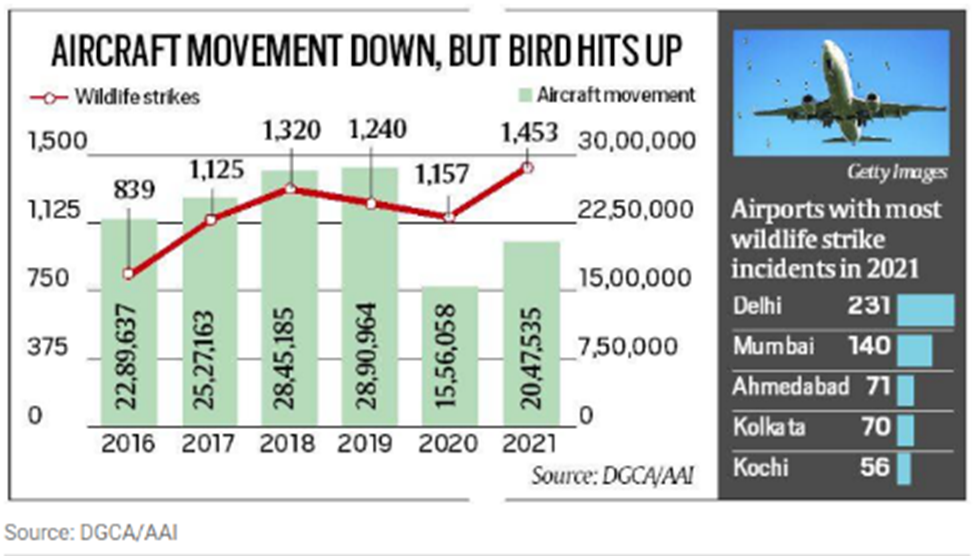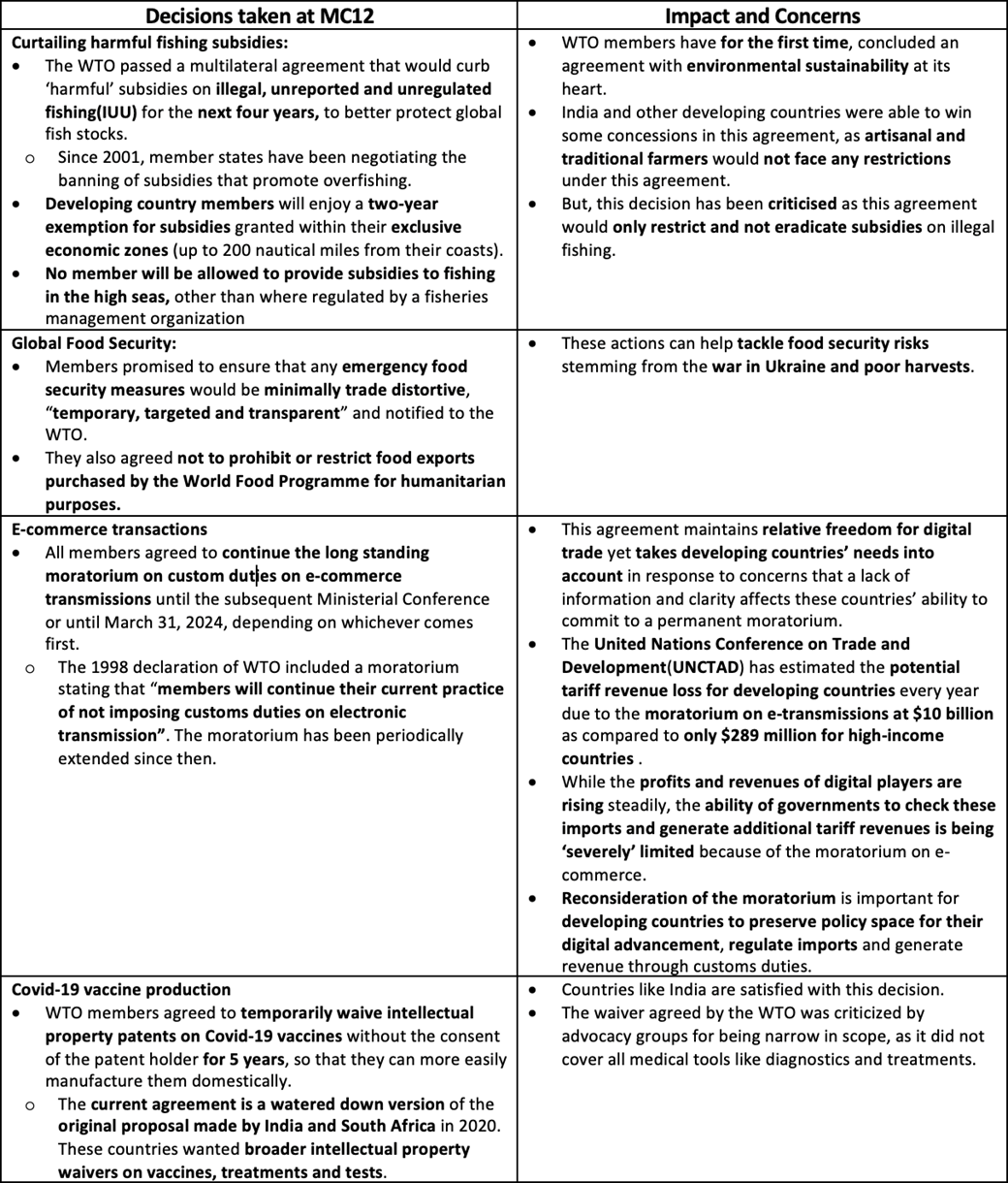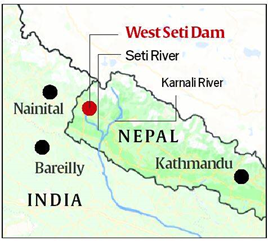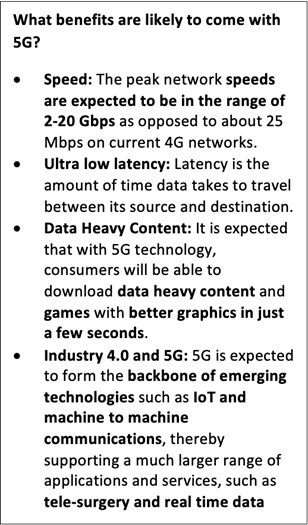Friday, 24th June 2022
Maharashtra Crisis: Anti-Defection Law Spotlight
In News
The recent political crisis in Maharashtra has brought the Anti-Defection Law into Focus.
About the News
- Political crisis has been unfolding in Maharashtra where the MLAs of one particular party were found to have aligned themselves with the party’s rebel.
- This has thrown the spotlight on the anti-defection law, and the roles of the Deputy Speaker and the Governor.
What is the anti-defection law, and how would it apply to the legislators?
- What is it? The anti-defection law provides for the disqualification of MLAs who, after being elected on the ticket of a political party, “voluntarily give up their party membership”.
- Legal Provision: It was included under 10th schedule via 52nd amendment act, 1985.
- Objective: Its purpose was to bring stability to governments by discouraging legislators from changing parties as there were toppling of multiple state governments by party-hopping MLAs after the general elections of 1967.
- Deciding Authority:
- Any question regarding disqualification arising out of defection will be decided by the presiding officer of the House -the speaker or the chairman.
- The Supreme Court has held that the legislators can challenge presiding officer’s decisions before the higher judiciary.
- Article 180(1) of the Constitution states that the Deputy Speaker performs the Speaker’s duties when the office is vacant. In Maharashtra’s case, as the office of the Speaker stands vacant, the Deputy Speaker has the authority to decide on defection.
- Whom does it apply to?
- The law is also applicable to independent MLAs. They are prohibited from joining a political party, and in case they do so, they can also lose their membership in the legislature.
- The law relates to nominated legislators too. In their case, the law specifies that they can join a political party within six months of being appointed to the House, and not after such time.
- Exception: However, the anti-defection law does not apply if the number of MLAs who leave a political party constitute two-thirds of the party’s strength in the legislature.
- These MLAs can merge with another party or become a separate group in the legislature.
- Time Frame for deciding such cases: The law does not provide a time-frame within which the presiding officer has to decide a defection case.
- However, the Supreme court held that ideally, Speakers should take a decision on a defection petition within three months.
Role of the Governor in case of Political Instability
- The Governor has a crucial role when there is political instability in a state. The Supreme Court ended the practice of Quick Dismissal of State governments by Governors with its judgment in the S R Bommai case in 1994.
- As per the judgment, the Governor can ask the Chief Minister to convene the Assembly and prove his/her majority on the floor of the House.
- Also, the Chief Minister of a state can recommend to the Governor to dissolve the legislature before the end of its five-year term and call for elections.
- Here, the Governor’s discretion comes into play- he/she may choose not to dissolve the legislature if he/she believes that the recommendation is coming from a council of ministers who do not enjoy the confidence of the state legislature.
Source:
- Explained: The anti-defection law, and why Eknath Shinde could be poised to dodge it in Maharashtra
- What is the Anti-Defection Law and how will it shape the Maharashtra crisis?
Image source:
TDS on Virtual Assets - Edukemy Current Affairs
In News
Central Board of Direct Taxes (CBDT) has amended income tax rules to specify ways to comply with the new tax deducted at source (TDS) provision on virtual digital assets (VDAs) such as cryptocurrencies.

About the News
- The Finance Act, 2022 introduced Section 194S in The Income Tax Act, 1961, under which a TDS of 1 per cent will be levied on the transfer of VDAs effective July 1 if the value of transactions exceeds Rs 10,000 in a year.
- As per the new rules, any sum deducted under section 194S is to be paid to the central government within 30 days from the end of the month in which the deduction is made.
- The new rules also say that the person responsible for deduction of tax should give a TDS certificate to the payee within 15 days from the due date for reporting it to the government.
Various Scenarios for levying of TDS
In the guidelines, the Tax Department has defined the responsibilities of deducting the tax in various scenarios.
- VDA not owned by the Exchange: In cases where the transfer of VDA takes place on or through an exchange, and the VDA being transferred is not owned by the exchange, tax may be deducted by the exchange making the payment to the seller.
- When the payment between the seller and the exchange is being done through a broker, the responsibility to deduct tax shall be on both the exchange and the broker.
- VDA owned by the Exchange: In cases where transfer of VDA takes place on or through an exchange, and the VDA being transferred is owned by this exchange, the primary responsibility to deduct tax remains with the buyer or his broker.
- However, as an alternative, the exchange may enter into a written agreement with the buyer or his broker that in regard to all such transactions the exchange would be paying the tax on or before the due date for that quarter.
- This mainly deals with situations where the transfer of a VDA is being made against money.
- Exchange of two cryptocurrencies: If two different crypto currencies — say, bitcoin and ether — are being exchanged, both the persons would be considered buyers as well as sellers. Therefore, both will need to pay tax with respect to the transfer of cryptocurrency.
- The guidelines also allow the exchanges that are facilitating such transactions to deduct tax in these cases.
- VDA bought in kind: Where VDA is transferred for consideration in kind, or partly in cash and partly in kind, through an exchange, tax may be deducted by the exchange. This alternative approach can be exercised based on a written agreement between the exchange and the buyers/ sellers.
- The exchange would be required to deduct tax on both legs of the transaction (buyers/ sellers) and report it as such.
- Lesser-known cryptocurrencies: The CBDT has defined four primary VDAs — bitcoin, ether, USD Tether, and USD Coin — for the purpose of tax deduction on lesser known cryptocurrencies.
- For example, in case of trade for Monero to Deso, the exchanges shall immediately execute a market order for converting this tax deducted in kind (1% Monero/ 1% Deso in the above example) to one of the primary VDAs (BT, ETH, USDT, USDC) which can be easily converted into INR.
Sources:
PM e-VIDYA - Edukemy Current Affairs
In News
The Ministry of Education’s initiative to use ICT under the "PM eVidya" scheme during the Covid pandemic has recently won UNESCO's recognition.
About the News
- UNESCO’s King Hamad Bin Isa Al-Khalifa Prize is an award that recognizes innovative approachesin leveraging new technologies to expand educational and lifelong learning opportunities for all, in line with the UNSDG goal 4 on Education.
- The Prize rewards individuals and organizations that implement outstanding projects and promote the creative use of technologies to enhance learning, teaching and overall educational performance in the digital age.
What is PM eVIDYA?
- The PM eVidya scheme is an initiative of the Ministry of Education that was launched in 2020.
- The scheme was launched under the One Nation One Digital Platform with the objective of protecting the education of children during the Covid-19 pandemic.
- It unifies all efforts related to digital/online/on-air educationto enable multi-mode access for imparting education by using technology to minimise learning losses.
- Therefore, in 2020, the top 100 universities were permitted to automatically start online courses via the PM eVidya scheme.
- It will consist of:
- DIKSHA for school education in all the states/UTs
- One designated TV channel per class from class 1st to 12th
- Use of Radio, podcasts, and Community Radio
- Special e-content for visually and hearing impaired.
- Top 100 universities were allowed to conduct their online classes.
- Benefits of the scheme: Some of the major benefits of the scheme are –
- Easy to access online classes.
- Students can attend their classes at the comfort of their homes and staying safe during the pandemic.
- A one-stop destination for education.
- Various e-learning contents were provided.
- QR-coded energized books were published for all the classes.
- Special arrangements for visually impaired and hearing-impaired students.
- The students who do not have the access to internet facility can attend their classes via a DTH channel dedicated solely for educational purposes.
- Implementation of the scheme:
- For the successful implementation of the scheme, the government launched an online PM e VIDYA portal called Swayam Prabha, which is a group of34 DTH channels.
- These channels telecast education-related programmes every day.
- Another portal known as DIKSHAwas designed for school level education which provided study material for each class according to the school curriculum.
- Besides these, several radio programmes, podcasts and community radio sessions were organized.
Source:
- Use of ICT in school education in India receives UNESCO’s recognition
- Use of ICT in school education in India receives UNESCO's recognition
Image source:
Master Tara Singh - Edukemy Current Affairs
On June 24, 1885 Master Tara Singh, a devoted Sikh leader, was born as Nanak Chand. Singh had a great inclination to promote and defend Sikhism. The Shiromani Gurdwara Prabhandak Committee (SGPC), the organisation in charge of overseeing gurdwaras, was also founded by him. He opposed the partition of India and contended that the Sikh community would be divided as a result. Later when he found out that the partition will anyhow take place, he campaigned for an independent Sikh state- Punjabi Suba. Tara Singh and his party started a number of agitations to achieve this goal.

In 1961, Tara Singh himself began a fast unto death (which lasted for 48 days) as the government stood firm in its resistance to Punjabi Suba. Although the government did not immediately grant his request, it did so in 1966. He died in 1967.
Source:
Pink bollworm - Edukemy Current Affairs
- Context: Pink bollworm (PBW) infestation has been causing trouble for cotton growers in Punjab and Haryana.
- The pink bollworm (Pectinophora gossypiella), is an insect known for being a pest in cotton farming.
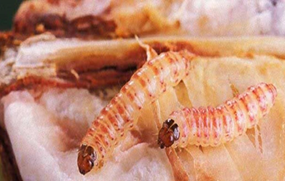
- Originally reportedin India in 1842, it is native to Asia but has spread as invasive species throughout the cotton-producing countries, causing annual crop losses.
- The female moth lays eggs in a cotton boll, and when the larvae emerge from the eggs, they inflict damage through feeding.
- They disrupt the protective tissue around the boll which leads to the entry of other insects and fungi.
- In parts of India, the pink bollworm is now resistant to first generation transgenic Bt cotton (Bollgard cotton) that expresses a single Bt gene (Cry1Ac).
- Infestation of bollworms is controlled with insecticides and also by mating disruption, chemicals, and releases of sterile males which mate with the females but fail to fertilize their eggs.
Source:
- Pink bollworm surfaces in cotton early this year in Haryana, Punjab
- Pink bollworm attack in Mansa yet again
Image source:
Boosting Hybrid Securities Growth
- Context: SEBI has recently set up an advisory committee on hybrid securities to make recommendations for giving a fillip to the growth of such instruments.
- Hybrid security is a single financial security that combines two or more different financial instruments.
- Often referred to as "hybrids," it generally combines both debt and equity characteristics.
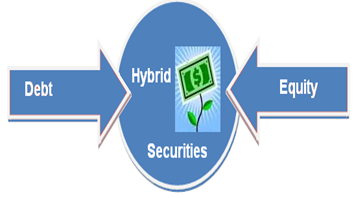
- The most common type of hybrid security is a convertible bond that has features of an ordinary bond but is heavily influenced by the price movements of the stock into which it is convertible.
- They are bought and sold on an exchange or through a brokerage.
- Hybrid securities are beneficial to investors because they provide investors with protection during bankruptcy as compared to common stock.
- That is, hybrid investors are eligible to be paid before common stockholders in bankruptcy.
- Additionally, hybrid securities generally provide a higher rate of return than the typical debt instruments.
Source:
- Sebi sets up panel on hybrid securities
- Sebi forms advisory panel to hybrid securities to enable larger retail play
Image source:
Drug- Resistant Typhoid - Edukemy Current Affairs
- Context: As per recent studies, the effectiveness of antibiotics for typhoid fever has been threatened by the emergence of drug resistant strains.
- Typhoid is a life-threateningsystemic infection caused by the bacterium Salmonella enterica serovar Typhi (commonly known as Salmonella Typhi) carried only by humans.
- It istransmitted by the faecal-oral route, through ingestion of contaminated food or water.
- Without treatment, about one person in 20 who recovers from typhoid becomes a ‘carrier’ and can infect others for about 3 months to one year without having any symptoms.
- Symptoms of the illness include: fever, fatigue or tiredness, malaise (general feeling of unwellness), sore throat, persistent cough, headache.
- Typhoid fever requires prompt treatment with
- The typhoid vaccine is available as an oral medication or a one-off injection which is only 50–80% effective.
- Typhoid fever causes 11 million infections and more than 1,00,000 deaths per year.South Asia accounts for 70% of the global disease burden.
- The typhoid endemic countries includes parts ofAsia (especially India, Pakistan, and Bangladesh), Africa, the Caribbean, Central and South America, and the Middle East.
Source:
Theri Desert - Edukemy Current Affairs
- Context: There are a couple of theories regarding the formation of Theri Desert, the most plausible being the role of south west monsoonal winds.
- It is a small desertsituated in Tamil Nadu.
- It consists of red sand dunesand is confined to Thoothukudi district.
- The red dunes are called theriin Tamil which consist of sediments dating back to the Quaternary Period (began 2.6 million years ago) and are made of marine deposits.
- They have very low water and nutrient retention capacity.
- The dunes are susceptible to aerodynamic lift (the push that lets something move up i.e. it is the force that is the opposite of weight).
- The red dunes are composed of heavy and light minerals which include: Ilmenite, Magnetite, Rutile, Garnet, Zircon, Diopside, Tourmaline, Hematite, Quartz, Feldspar, Biotite etc.
- These iron-rich heavy minerals have been found to have had undergone leaching by surface water then oxidised because of the favourable semi-arid climatic conditions due to which the dunes are red-coloured.
Source:
Image source:
Without soil conservation, there is no food security: IE
Essence: The article discusses the importance of soil and various causes of soil degradation. According to several studies, nearly 90% of the earth's soils might be damaged by 2050 if no corrective action is taken. Adopting novel policies and agro-ecological practises that establish wholesome and sustainable food production systems is urgently required given the mounting danger to global food security and the accompanying risk of major environmental damage.
Why should you read this article?
- To comprehend the problems with soil and why a healthy soil is essential to the production of sustainable food.
- To be aware of potential future solutions to the problem.
Source:
Training Karmayogis: Essential for Inclusive Development
Essence: Given our growth ambition, a massive scale-up in capacity-building is needed both at the political and bureaucratic levels. Hence, a programme like Mission Karmayogi needs to build capability to envision the future and work towards realising it. Capacity building must aim at building professionals in all domains, from technical experts to generalists. Also, building morale and self-respect among the frontline workers is critical.
Why should you read this article?
- To understand the current needs of the system from its civil servants.
- To understand the types of capacity building components for civil servants.
Source:
Odisha’s Mo Bus - Edukemy Current Affairs
- Mo Bus, the bus service of Odisha’s Capital Region Urban Transport (CRUT) authority, has been recognised by the United Nations as one of 10 global recipients of its annual Public Service Awards for 2022.
- The Mo Bus service was launched in the year 2018 to ensure transformation of the urban public transport scenario in the city and its hinterland through use of smart technology, service benchmarking and customer satisfaction.
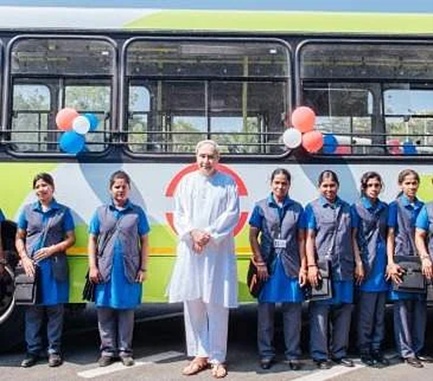
About the Bus service
- The public transport service has been recognised for its role in promoting gender-responsive public services to achieve the SDGs (Sustainable Development Goals).
- Recognising the need for improvement in public transport, the Odisha government reorganized the public transit services in the city to provide an integrated, reliable and inclusive public bus service system.
- Mo Bus has incorporated real-time technologies like live tracking, travel planner and e-ticketing and an e-rickshaw system called ‘Mo E-Ride’ has been introduced as a last-mile feeder service.
- The impact is that 57 per cent of the city’s commuters now use the Mo Bus. Mo E-Ride is estimated to reduce pollution by 30-50 per cent. 40 per cent of Mo Bus conductors are women and 100 percent of Mo E-Ride drivers are women, transgender people, and people from disadvantaged communities.
Quote: “ Inclusivity means not 'just we're allowed to be there,' but we are valued”
Sources:
Share the article
Get Latest Updates on Offers, Event dates, and free Mentorship sessions.

Get in touch with our Expert Academic Counsellors 👋
FAQs
UPSC Daily Current Affairs focuses on learning current events on a daily basis. An aspirant needs to study regular and updated information about current events, news, and relevant topics that are important for UPSC aspirants. It covers national and international affairs, government policies, socio-economic issues, science and technology advancements, and more.
UPSC Daily Current Affairs provides aspirants with a concise and comprehensive overview of the latest happenings and developments across various fields. It helps aspirants stay updated with current affairs and provides them with valuable insights and analysis, which are essential for answering questions in the UPSC examinations. It enhances their knowledge, analytical skills, and ability to connect current affairs with the UPSC syllabus.
UPSC Daily Current Affairs covers a wide range of topics, including politics, economics, science and technology, environment, social issues, governance, international relations, and more. It offers news summaries, in-depth analyses, editorials, opinion pieces, and relevant study materials. It also provides practice questions and quizzes to help aspirants test their understanding of current affairs.
Edukemy's UPSC Daily Current Affairs can be accessed through:
- UPSC Daily Current Affairs can be accessed through Current Affairs tab at the top of the Main Page of Edukemy.
- Edukemy Mobile app: The Daily Current Affairs can also be access through Edukemy Mobile App.
- Social media: Follow Edukemy’s official social media accounts or pages that provide UPSC Daily Current Affairs updates, including Facebook, Twitter, or Telegram channels.

